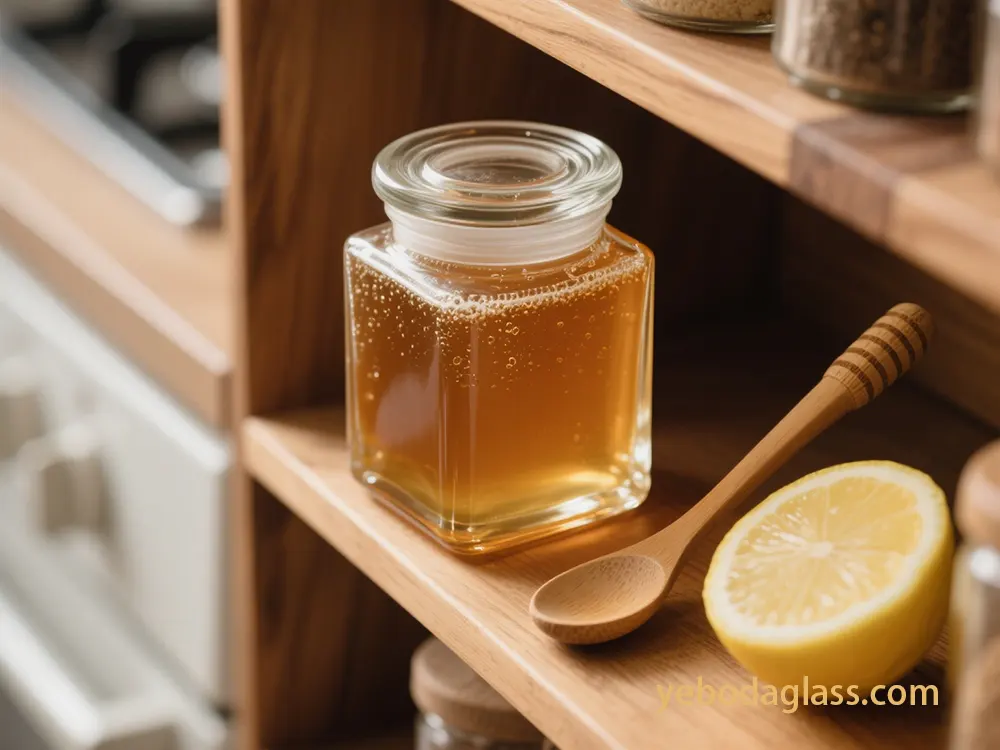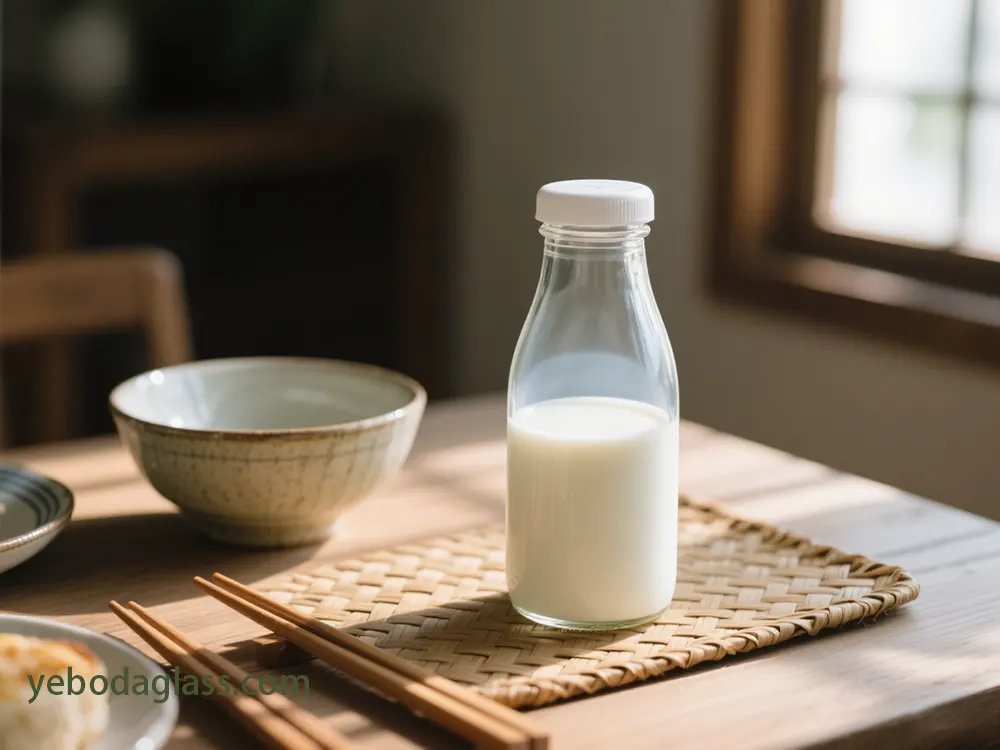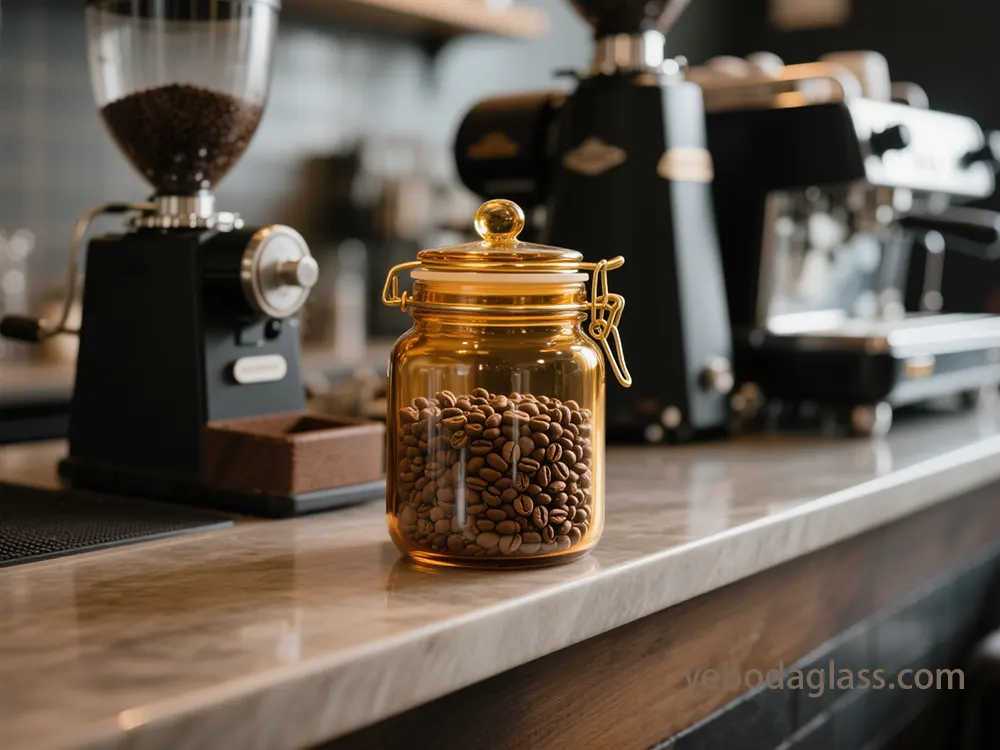Infinite Recyclability with Economic and Environmental Benefits:
Glass is infinitely recyclable. The use of cullet saves money and reduces CO2 emissions. For example, every 10% cullet substituted reduces energy costs by ~3% and CO2 emissions by ~5%. A ton of cullet saves 1.2 tons of virgin materials (including 850 kg of sand) and may replace up to 95 % of the virgin materials.
Closed-Loop Recycling Programs:
The “Close the Glass Loop” initiative (June 2020) aims to achieve a 90% average collection rate across the EU by 2030 and maximize the bottle-to-bottle recycling process. In 2023, the EU average reached 80.8%.
Challenges and Opportunities for the Maximum Use of Cullet-based Glass:
Increased Defects:
Cullet will generally lead to an increase in defects, particularly in food/beverage packaging. This is generally due to containing imbalances and impurities within the cullet; also, glass based packaging which is heat treated and rapidly cooled leads to weak points.
The contamination will be high from post-consumer sources- these high contaminants such as metals, ceramics, and non-glass will sometimes create weak points.
- Inspection Technology: Newer inspection systems such as Peco InspX X-ray, provide real-time inspection of small defects in the cullet stream.
- Cullet Preparation: The preparation of the cullet stream must consist of thorough cleaning, removing debris and crushing. The cleaning of all cullet needs to wash away dirt and remove contaminants before being melted.
- Glass Fines: ~20% of crushed glass becomes unusable ‘fines’. Companies like Ardagh and Sheffield Hallam University are exploring compacting fines into briquettes for melting.
- Industry Commitment: O-I Glass focuses on sustainability through increased cullet usage.SGD Pharma uses 20% post-consumer recycled (PCR) glass cullet,Bormioli Luigi offers up to 15% PCR for perfume bottles, and Stoelzle’s PharmaCos line uses up to 73% recycled content in amber glass.
2.3. Novel Surface Treatments
Surface treatments facilitate improvements in the durability, aesthetics and function of glass, and can show significant improvement in scratch resistance and protection of product.
- Silane Coupling Agents: Enhance adhesion between glass and polymer matrices to improve composites fracture toughness.
- Frekote Treatment: Frekote Treatment can improve toughening performance during the test preparation stage with development of poorly bonded particles in the epoxy matrix.
- Hygrthermual Aging Effects:
- Considerations of the longterm performance of composites with silane-treated glass were made to account for environmental impacts which affect usability and toake note of the need for advanced testing. Transcrystalline Polypropylene Layers:
- Building a house: Scratch and abrasion resistance:
- High-gloss glazes usually provide better protection materials than low-gloss materials. Vetropack’s Echovai Technology in their thermally tempered lightweight glass offers excellent labels with much higher resistance to abrasion and increased reclamation and circulation rates compared to non-treated product. UV Protection:
- For UV light-sensitive products, transparent UV filter products are available such as Stoelzle’s Lumi Coat with Nexdot which filters out damaging UV rays without affecting transparency. ‘Green’ solutions:
- Some treaters, such as Novel Surface Treatments Ltd. are committed to only using eco-friendly chemical products for their glass treatment processes, which is a clear indicator that the industry is focusing on effective processing and sustainable processes. 3. Advanced Manufacturing Methods: Precision, Lightweighting, and Efficiency
- Manufacturing innovations enable unprecedented precision, significant weight reductions, and enhanced efficiency in glass bottle production and decoration. 3.1. Precision Moulding and Forming Processes

Precision moulding allows complex designs, pushing the boundaries of glass aesthetics.
Complex Designs:
- Newer machinery supports higher levels of precision and accuracy to enable complex designs. Narrow Neck Press and Blow (NNPB):
- Important for lightweight glass. Replaces the traditional blow and blow process for pressing the liquid glass into the cavity, creating further composition control with thinner, more uniform walls in the glass bottle. Finite Element Analysis (FEA):
- Used to recognize stress points that enable the designer to optimize factors for lightweighting while maintaining structural integrity. 3.2. Ultra-Lightweighting
- Ultra-lightweighting glass bottles is focused on the environmental and freight savings associated with reduced glass weight. Reduction of weight associated benefits:
- Lightweighting reduces the consumption of raw materials, production emissions and logistics costs, with a possible CO2, savings of 12-17%. Industry Leaders:
- Toyo Glass owns roughly ~60% of the Japanese ultra lightweight bottle market because they have high levels of technical skill for melting, design, producing, and inspecting. Example Specifics:
- Vetropack made terrific savings (i.e. 20–30 grams in 330ml beer bottles and 50-80 grams in wine bottles). SGD Pharma’s NOVA range cut CO2 emissions by 20% for a 200 ml bottle. Echovai Technology:
Vetropack’s Echovai has an enabled process to produce returnable bottles out of thermally tempered lightweight glass that cut weight by approximately a third increase strength and making them highly abrasion resistant. This allows for a greater number of bottles to fit per pallet, and significantly reduces the volume of logistics, and the associated CO2 footprint (i.e. Mohrenbrauerei reduced almost 1,000 tonnes per year, with CO2 emissions reduced to a quarter).
Joint Lightweighting:
Codorníu and Verallia developed a Cava bottle 775 grams, with roughly 125 gram reduction per bottle. Pochet Group’s Halo Lightweight concept reduced material weight of closure caps by 25% compared to standard caps.
3.3. Qualified Embellishment Techniques
- The embellishment techniques provide good designs, bold colors and original textures that allow brands to differentiate themselves in competition. Digital Printing:
- Can provide one-off, unique, personalized and high-resolution embellishment with photographic finishes. Digital printing also allows for the easy transfer of elaborate designs. Special Coatings/ Finishes:
- When layers of paint or other materials are applied, unique colors or finishes (such as shiny matte or metallic) can be achieved, while adding depth. Coatings can be spray-coated or in-mold colors. Also, Bormioli Luigi’s “Inside Mirror” which is a special embellishment developed to create an internal metallized decoration for a feel of luxury. Traditional techniques:
Screen Printing, acid etching, pad printing and hot foil stamping are techniques that will always be relevant due to their overall aesthetic feel.
Development Techniques:
- Direct printing, laser etching, and 3D printing to disrupt the industry with detail, colour and complexity with geometric shapes. Digital Technology:
- 3D modelling software to visualize your ideas prior to production, and machines that are computer-controlled can accurately print the decoration providing less wasted time, decreased production errors and a more efficient operation. 4. Design Aesthetics and Functional Integration: Enhancing Consumer Experience and Security
- Today, glass packaging allows technologies like haptic experience strategies and smart technologies to enhance sensory interaction with consumers and fortify product integrity and security. 4.1. New Design Principles and Haptic Textures
- Design is increasingly a multi-sensory experience, and haptic textures are an significant component. Haptic Textures:
- Tactile features such as embossed textures, frosted finishes or textured coatings improve perceived quality and individuality. Minimalist Design:
Apparent in the elevated lean towards minimalist design, fewer design elements, clean lines with subtle branding is also evident in marketing to consumers who prefer clean lines, and less cluttered or busy designs to exemplify high-end products across spirits, fragrances, and cosmetics.
Custom Shape:
- Precision molding and advanced manufacturing techniques have enabled companies to create custom shapes and elaborate designs, a thankless practice for some companies producing products with funky bottles that can be perceived as works of art, their shape and their detail representing the company/brand identity. Functional Elements:
- Double-walled glass jars; frosted glass; air-tight sealed jars and tubs; UV protection in glass bottles; and a choice of dropper applicators are typical of many cosmetic packaging items with both aesthetic and functional properties. Transparent tubes for lip glosses and mascaras serve the purpose of product facilitation – visible use of product. 4.2. Integrated Smart Features for Traceability and Engagement
- Digital technologies are turning glass packaging into interactive platforms. Integrated NFC and QR Codes:
- NFC chips and QR codes are presented to consumers for greater traceability, product information, and consumer engagement. RASTAL Smartglass®:
- Embeds an NFC chip in a drinking glass, which identifies each glass as unique. Consumer Engagement and Data Capture:

NFC enabled glasses take individuals to a mobile website with product information, marketing and sales information, in real-time with different engagement and campaigns, along with primary data capture.
Gastronomy Applications:
NFC glasses used in restaurants support communication reducing administrative effort, and allow cashless payment.
Automated Dispensing and Payment:
- NFC technology can trigger dispensing systems when presented with the compatible glass allowing automated dispensing and payment. Anti -Counterfeiting:
- NFC chips and QR codes giving unique identification, can provide solid anti-counterfeiting and product authentication by virtue of being beyond premium. 4.3. Cosmetics
- The cosmetics industry balances a large amount of luxury, with sustainability and functional design playing a large role. Sustainability and Luxury:
- Luxury packaging is driven by the inevitable dual demand for sustainable and luxury formats. Innovative uses of glass include: double-walled glass jars, frosted glass jars, with air-tight seals, UV protected glass, dropper applicators and minimalist designs are gaining momentum.
Airless Delivery Systems:
The internal plastic containers have been removed for sustainability purposes.
- Refillable Containers: Refillable glass cosmetic bottles are attractive to consumers, and brands are investing in refill stations and programs for reusable bottles to put an end to waste.
- Clear Tubes: ท่อแก้วใสสำหรับลิปกลอสและมัสการ์ช่วยให้ผู้บริโภคเห็นสีของผลิตภัณฑ์ได้เช่นกันกับการเห็นจำนวนที่เหลืออยู่ ความใสเป็นปัจจัยที่น่าสนใจที่สุด
- 4.4. อาหารและของแซ่งคุณภาพสูง แก้วมีแคริสมาของความสดใหม่สำหรับอาหารและของแซ่งคุณภาพสูง
- ผลิตภัณฑ์ที่สดใหม่: แก้วเป็นวัสดุที่ไม่มีรูระดับ จึงจะรักษารสและกลิ่นของส่วนประกอบที่มีรสชาติและของเหลวคุณภาพสูงไว้ได้
- ประเมินผลิตภัณฑ์ด้วยตา: ผู้ซื้อตรวจสอบคุณภาพที่พิเศษของผลิตภัณฑ์ด้วยความใสของตัวเอง ซึ่งสร้างการพิจารณาของผู้ซื้อ
- การป้องกันแสง: แก้วที่ทับสีหรือมีสีจะป้องกันสินค้าที่บอบบางต่อแสงอาทิตย์; ดังนั้นจึงสามารถรักษาคุณภาพและช่วงชีวิตบนตู้ของผลิตภัณฑ์ได้
ขวดน้ำดื่มสามารถใช้ได้เป็นซ้ำ:
ขวดแก้วที่สามารถเติมเต็มได้อาจใช้ได้ประมาณ 25 ครั้งหรือมากกว่า ซึ่งลดการปล่อยคาร์บอนไดโอกไซด์ต่อขวด/ถุงบรรจุอย่างมาก
- 4.5. ยา การคิดค้นการบรรจุแก้วในยาเน้นที่ความปลอดภัย คุณภาพ และความไม่เข้าปฏิสัมพันธ์เคมีสำหรับสูตรที่อาจเป็นผลิตภัณฑ์ที่บอบบาง
- Many “BPA-free” merchandise use alternative chemical compounds, such as BPS or BPF, which may also have even stronger disruptive effects. Almost all plastics, including those labeled “BPA- and phthalate-unfastened,” launch estrogenic chemical substances. การคิดค้นแก้วเป็นสำคัญเมื่อพัฒนาโมเลกุลยาที่ซับซ้อน
- ความไม่เข้าปฏิสัมพันธ์ & คุณสมบัติการบัง: แก้วไม่เข้าปฏิสัมพันธ์ ดังนั้นจึงเหมาะสำหรับสูตรที่บอบบาง ในฐานะบัง แก้วมีประสิทธิภาพมากเพราะมันป้องกันน้ำและไม่มีการออกซิเจนและสารปนเปราะบางอื่น
- การลดปัญหาการแยกชั้น: แก้ว Valor® ของ Corning แก้วอะลูโมนิเคลท์ คือวัสดุหลักในการแก้ปัญหาการแยกชั้นในบริบทยา
- การทำความสะอาดและความตรงตาม: แก้วมีความสามารถในการทนทานต่อการทำความสะอาด การคิดค้นในการผลิตแก้วคุณภาพสูงจะเกินความตรงตามกฎระเบียบที่หนักหน่วงในยา
การหลีกเลี่ยงการติดตัวและการป้องกันเด็ก:
Stoelzle ผลิตปิดปุ่มที่ป้องกันเด็กบางชนิดสำหรับเส้นทาง PharmaCos ของพวกเขาเพื่อความปลอดภัยของผลิตภัณฑ์
- การบริบท: การบริบททั่วไปรวมถึงฉลาก แอมโพวีลสำหรับยา ขวดสำหรับน้ำตาล และโครงลูกกลิ้งสำหรับฉลากยาแทงเตรียมมาก่อน
- 5. จุดร้อนการคิดค้นระดับโลกและภูมิภาค: แนวโน้มและการใช้งาน การคิดค้นการบรรจุแก้วเป็นระดับโลก มีแนวโน้มและสาเหตุที่แตกต่างกันในภูมิภาคสำคัญ
- 5.1. ยุโรป ยุโรปเป็นผู้นำในการคิดค้นการบรรจุแก้ว ซึ่งมีส่วนประกอบรวมถึงกฎระเบียบที่หนักหน่วงและตลาดคุณภาพที่พัฒนาแล้วที่มีส่วนร่วมในสิ่งนี้
- ความเติบโตของตลาด: From USD 22.45 billion (2025), it is forecasted to develop to USD 26.29 billion (2030), with bottles’ share status at round 72% (2024).
Regulatory Influence:
EU targets when it comes to recycling and waste reduction, especially concerning the round economic system, are the major drivers.The Packaging and Packaging Waste Regulation (PPWR) lays down that all packaging should be recyclable by the year 2030 and also seeks to reduce wastes to the greatest extent possible. The Single-Use Plastics Directive (SUPD) is an indirect supporting mechanism for glass as a sustainable alternative.
- Extended Producer Responsibility (EPR) companies facilitate much higher rates of glass recycling. While the PPWR calls for Deposit Return Schemes (DRS) on cans/plastic bottles by 2029, FEVE demands DRS improvements for current glass EPR schemes, worried that DRS may in fact detrimentally affect glass recycling at least in terms of quality. Germany went in for DRS in 2003 and has excellent PET recycling. Decarbonization Efforts:
- The European glass container industry invests over €600 million annually in innovation and decarbonization, aiming for net-zero emissions by 2050. Developments like O-I’s MAGMA, increased cullet usage, and electric furnaces are key. Consumer Preferences:
- Eco-conscious consumers, especially in Sweden and Denmark, drive demand for glass, particularly with transparent lifecycle communication. Challenges:
- Tracking recycling rates is harder with output-based reporting.Inconsistent recycling systems hinder effectiveness.High energy prices also pose a challenge. 5.2. North America
- North America possesses one of the major markets of glass packaging products owing to the preference for sustainability and growing industries. Estimated to be valued at USD 11.42 billion in 2024 and expected to grow to USD 15.71 billion by 2033 at a 3.61% CAGR. The US holds 62.4% of the regional revenue share.
- Driving Factors: Growth in the alcoholic beverages market in the US is increasing. Demand for eco-friendly sustainable packages drives consumers.

Regulatory Impact:
California and Colorado set EPR laws. California and New York’s carbon emission caps mandate cleaner technology investments. Canada’s EPR for industry sectors includes a 30% carbon intensity reduction by 2030.
Premiumization:
Frosted glass and other glass types remain in high demand for conveying quality and luxury. They are widely used in alcoholic beverages, gourmet food, and high-end cosmetics.
- Fastest Growing Segment: Projected to drive the fastest growth in the US pharmaceutical market is glass packaging, with a CAGR of 5.9% through 2033.
- Competition: Glass packaging products face competition from metal cans and PET bottles which are lighter and less fragile.
- The decision among glass and PET for YEBODA is multifaceted. Glass excels in inertness, premium notion, and absolute barrier residences, best for excessive-cost, touchy, or background merchandise. PET gives compelling blessings in decrease production/logistics fees, higher production speeds, and a usually greater favorable environmental profile, specially with recycled content material and advanced barrier technology. Initiatives taken closer to urbanization, growing earnings degrees, and problem for the environment as some of the many elements contributing closer to the boom of the APAC place as a marketplace for glass packaging.
- Having the most important international market percentage, APAC is projected to attain USD fifty nine.09 billion through 2033 with a five.Seventy five% CAGR boom. Growth Drivers:
- Demand for premium packaging, increasing purchaser cognizance, strict regulations, and rising marriage charges at the side of converting existence.Demand is particularly amplified through westernization and income shifts for the food and beverage sector, as well as for alcoholic beverages. Strongly impacts the glass packaging market of Japan, where consumers purchase high-quality, aesthetic packaging glass at a premium. Glass is taken as a mark of luxury, advancement, and quality. South Korean brewers showcase transparency through the use of clear bottles.
- Technology Adoption: การติดตามอัตราการรีไซเคิลยากขึ้นเนื่องจากการรายงานที่มีโครงสร้างตามผลลัพธ์ ระบบการรีไซเคิลที่ไม่สม่ำเสมอทำให้ความเป็นผลในการปฏิบัติตามเพิ่มมาก ราคาพลังงานที่สูงยังเป็นความท้าทายด้วย
5.2. อเมริกาเหนือ
อเมริกาเหนือมีหนึ่งในตลาดหลักของผลิตภัณฑ์การบรรจุในแก้วเนื่องจากความต้องการความยั่งยืนและอุตสาหกรรมที่เติบโต
- Fastest Growing Segment: คาดการณ์ว่ามีมูลค่า 11.42 พันล้านดอลลาร์ในปี 2024 และคาดว่าจะเติบโตเป็น 15.71 พันล้านดอลลาร์ในปี 2033 ด้วยอัตราการเติบโตเฉลี่ย 3.61% สหรัฐมีส่วนแบ่งผลกระทบท้องถิ่น 62.4%
- ปัจจัยที่กระตุ้น: การเติบโตของตลาดเครื่องดื่มแอลกอฮอล์ในสหรัฐกำลังเพิ่มขึ้น ความต้องการของการบรรจุแบบเป็นมิตรกับสิ่งแวดล้อมและยั่งยืนทำให้ผู้บริโภคตื่นตัว
- ผลกระทบของกฎหมาย: แคลิฟอร์เนียและโคโลราโดตั้งกฎหมาย EPR แคลิฟอร์เนียและนิวยอร์กกำหนดระดับความเป็นไอน้ำของคาร์บอนและขัดขวางการลงทุนเทคโนโลยีที่สะอาด แคนาดามี EPR สำหรับสถานที่ด้วยการลดความเข้มข้นของคาร์บอน 30% ภายในปี 2030
- การละเอียด: แก้วที่มีประสิทธิภาพและประเภทแก้วอื่นๆยังคงมีความต้องการสูงเพื่อสื่อถึงคุณภาพและราคาแพง มีการใช้งานแพร่หลายในเครื่องดื่มแอลกอฮอล์ อาหารที่รับประทานเป็นระดับราคาสูง และน้ำหนักที่สูง
- ส่วนที่เติบโตเร็วที่สุด: การบรรจุในแก้วคาดว่าจะกระตุ้นการเติบโตเร็วที่สุดในตลาดยาในสหรัฐ ด้วยอัตราการเติบโตเฉลี่ย 5.9% จนถึงปี 2033
- ความแข่งขัน: ผลิตภัณฑ์การบรรจุในแก้วต้องเผชิญกับคู่แข่งจากซองโลหะและแก้ว PET ซึ่งมีน้ำหนักน้อยกว่าและทนทานน้อยกว่า
5.3. ตะวันออกเฉียงใต้และตะวันออกเฉียงเหนือ (APAC)
การเริ่มต้นที่เข้าใกล้กับการเมืองเมือง ระดับรายได้ที่เพิ่มขึ้น และปัญหาสิ่งแวดล้อมเป็นหนึ่งในส่วนที่ทำให้เติบโตของพื้นที่ APAC เป็นตลาดสำหรับการบรรจุในแก้ว
- Fastest Growing Segment: มีส่วนที่สำคัญที่สุดของตลาดระหว่างประเทศ APAC คาดว่าจะทำเงินได้ 59.09 พันล้านดอลลาร์ในปี 2033 ด้วยการเติบโตเฉลี่ย 5.75%
- ปัจจัยที่กระตุ้นการเติบโต: ความต้องการของการบรรจุแบบราคาสูง การเพิ่มความตื่นตัวของผู้บริโภค กฎหมายที่เข้มงวด และค่าตัวที่เพิ่มขึ้นร่วมกับการเปลี่ยนแปลงของชีวิต ความต้องการนี้เพิ่มขึ้นเฉพาะด้วยการตะวันตกและการเปลี่ยนแปลงของรายได้สำหรับสถานที่อาหารและเครื่องดื่ม รวมถึงเครื่องดื่มแอลกอฮอล์
- การละเอียด: ส่งผลกระทบอย่างมากต่อตลาดการบรรจุในแก้วของญี่ปุ่น ที่ผู้บริโภคซื้อแก้วที่มีคุณภาพสูง ที่มีความน่าสนใจทางภาพที่ราคาแพง แก้วถูกมองว่าเป็นสัญลักษณ์ของความหรูหรา ความก้าวหน้า และคุณภาพ ผู้ผลิตน้ำหนักของเกาหลีใต้แสดงถึงความชัดเจนผ่านการใช้ซองแก้วแสงเป็นธรรมชาติ
- การเริ่มใช้เทคโนโลยี การเติบโตและการพัฒนาของอุตสาหกรรมการผลิตกระจกเพื่อรวมการใช้วัสดุที่มีน้ำหนักเบา รวมทั้งการใช้การแพ็คเกจที่สามารถติดตาม ควบคุมอุณหภูมิ และตัวบอกความสดรวมทั้งส่งเสริมการเติบโตของตลาด
- ประเทศสำคัญ: อินเดียตอนนี้เป็นตลาดที่เติบโตเร็วที่สุด คาดการณ์ว่าจะเข้าถึงปริมาณ 4,856.9 ดอลลาร์สหรัฐ ในปี 2030 ขณะที่ญี่ปุ่นมีการเติบโตของตลาดที่คงที่โดยรองจากมาตรการลดการใช้วัสดุภาชน์น้ำเหลือง จีนคาดว่าจะนำเสนอรายได้ระดับโลกในปี 2030 โดยมีส่วนร้อยละ 41.6% ของรายได้ในพื้นที่เอเชียใต้-ตะวันออกในปี 2023 และอินเดียเป็นตลาดท้องถิ่นที่เติบโตเร็วที่สุด
การเข้าร่วมเป็นปัจจัยที่เป็นความท้าทาย รวมถึงกฎหมายที่เข้มงวด โดยมีการสอดคล้องกับต้นทุนการใช้พลังงานสูง รวมทั้งความกดดันต้นทุนในการโหลด
6.Future Outlook: Trajectories and Disruptive Potential
อนาคตของการแพ็คเกจกระจกคุณภาพสูงโดยมีการสร้างความล้ำเป็นผลของความยั่งยืน การสร้างความเป็นส่วนรวมของเทคโนโลยี และความคาดหวังของผู้บริโภคที่กำลังพัฒนา
6.1. Trajectory of Glass Bottle Innovations (Next 3-7 Years)
การสร้างความล้ำในกระจกขวดใน 3-7 ปีข้างเคียงจะเน้นไปที่:
- Increased Sustainability: Expanded refillable/reusable models, greater strength-efficient melting (electric powered, hydrogen furnaces), and similarly integration of excessive PCR content material.
- Extreme Lightweighting: NNPB’s optimized geometries and ongoing traits in skinny-wall technology will promote weight reduction without sacrificing energy.
- Advanced Functional Coatings: advent of multipurpose coatings with greater anti-shatter, UV, and scratch resistance in addition to active barrier abilties to increase shelf life.
- Hyper-Customization and Personalization: By permitting previously unheard-of levels of design complexity and personalization, digital printing and precision molding will produce one-of-a-kind, restricted-version packaging.
- Integrated Smart Technologies: Widespread use of modern embedded sensors, NFC, and QR codes to beautify consumer engagement, traceability, and anti-counterfeiting.This will move beyond trustworthy records exchange to consist of deliver chain transparency and interactive reviews.
- Hybrid Material Solutions: Increased exploration of hybrid designs combining glass with sustainable closures (metal, ceramic, timber) and modern allotting structures minimizing plastic use.
6.2. Emerging Technologies and Disruptive Potential
Apart from gradual enhancement, a few innovative technologies have the potential to disrupt entire industries.
- Additive Manufacturing for Glass (3D Printing):
- Development Stage: Direct glass printing (DGP) and binder jetting of powdered glass promising methods for intricate shaped and customized glass articles [i].
- Applications: Early applications are in prototypes and custom molds which improve design iteration cycles and enable customization [i]. These are likely to be early adopters in niche industries with low demand but high design complexity [i].
- Commercial Viability: These niche uses could be commercially useful in about 3 years, wider adoption in packaging is still 5-7 years out due to the need for scaled production, cost, consistent quality, and lower pricing issues [i].
- Challenges: Significant challenges remain in technique scaling, costs from materials, glass quality, thermal regulation, and glass finishing like precise heating and subsequent polishing, coating, and annealing [i].
- Bio-Based Glass Alternatives:
- Development Stage: The current focus is to extract bio- based glass from agricultural residue like rice husks to lower traditional glass based silica and increase sustainable practices [i]. There is also development of bioglass composites [i].
6.3. Potential Market Shifts and Strategic Implications
ทุกโรงงานผลิตและผู้ผลิตจะต้องปรับตัวตามกลยุทธ์ใหม่โดยสิ้นเสียงตามการเปลี่ยนแปลงที่ดำเนินอยู่และเพิ่มขึ้นในตลาด
- ย้ายไปสู่โมเดลเซ็นเทอรัลอีโคโนมี: การจัดการความนิยมจะย้ายไปทางที่มุ่งเน้นการ复用และการรีไซเคิลที่ยอดเยี่ยม ซึ่งจะต้องการการลงทุนใหม่ในเครือข่ายส่งสินค้าวนิยมและโครงสร้างพื้นฐาน
- การปรับแต่งและปรับเปลี่ยนตามความต้องการ: แบรนด์จะสนับสนุนลูกค้าของพวกเขาด้วยความ trung thànhต่อแบรนด์ที่ลึกขึ้นผ่านกลยุทธ์การตกแต่งที่กำลังพัฒนาและกลยุทธ์การทำรูปแบบบรรจุภัณฑ์ที่สามารถปรับตามต้องการในรูปแบบที่สำเร็จรูป
- การบรรจุภัณฑ์ที่ dựa trênข้อมูล: การบรรจุภัณฑ์ที่มีสมาร์ทจะมอบมูลค่าของข้อมูลที่ไม่เคยมีมาก่อนในรูปแบบข้อมูลสมานวันในการสนับสนุนลูกค้า โครงสร้างการส่งสินค้าทั้งหมด และผลิตภัณฑ์ ข้อมูลนี้สามารถช่วยในการทำให้ได้ผลลัพธ์ที่ดีขึ้นด้วยการตัดสินใจที่มีความเข้าใจและการเลือกเป้าหมายที่แม่นยำ
- ความทนทานในโครงสร้างการส่งสินค้า: วัสดุการบรรจุภัณฑ์ที่เพิ่มแล้วจะทำให้โครงสร้างการส่งสินค้าสามารถเบาขึ้นและทนทานขึ้น ซึ่งจะลดค่าการขนส่งและการเสียสินค้า
- การแยกตัวผ่านการอยู่รอดและเทคโนโลยี: แบรนด์ที่รวมการบรรจุภัณฑ์ที่ทำจากแก้วและปลูกสร้างจะได้รับความแข่งขันที่มีความเป็นไปได้
- ความจำเป็นทางกลยุทธ์: บริษัทต้องกำหนดเงินสำหรับการพัฒนาเส้นการผลิตใหม่เพื่อรวมตัวกับทางเลือกที่เบา ทนทานและมีราคาที่เหมาะสม
สรุป
กิจกรรมการคิดค้นของภาชนะแก้วแน่นอนจะเปลี่ยนรูปแบบของการบรรจุภัณฑ์ที่มีความราคาแพง แก้วเองก็ยังคงมีการคิดค้นพร้อมกับการก้าวหน้าของวิทยาศาสตร์วัสดุที่ดำเนินงานอย่างต่อเนื่องในการปรับปรุงรูปแบบของบรรจุภัณฑ์ให้ดีขึ้นในเรื่องความทนทาน การอยู่รอดที่ยอดเยี่ยมและเบา ความก้าวหน้าในกระบวนการผลิตที่มอบให้สามารถเบาลงและความซับซ้อนของการออกแบบ และในที่สุดคือการรวมเทคโนโลยีที่มีสมาร์ทที่มอบให้ลูกค้าบรรลือที่น่าสนใจพร้อมทั้งให้ความเป็นผู้นำในด้านความปลอดภัย ตลาดโลก (ส่วนใหญ่ครอบคลุมทั่วยุโรป อเมริกาเหนือ และเอเชีย-แปซิฟิก) กำลังมีส่วนร่วมในความก้าวหน้าที่เกี่ยวกับแก้วส่วนหนึ่งเพราะความกดดันของกฎหมายและส่วนหนึ่งเพื่อให้ใช้กับผู้บริโภคที่ตื่นตัวต่อสิ่งแวดล้อม ใน 3 ถึง 7 ปีข้างจากนี้ จุดหมายของการบรรจุภัณฑ์แก้วจะทรงพลังมากขึ้นและยอดเยี่ยมและมีการรวมดิจิทัลตามมุมมองของผู้มีส่วนร่วม สำหรับทุกโปร่งของผู้มีส่วนร่วม ขั้นตอนแรกที่สำคัญคือ:รับมือกับการคิดค้น ลงทุนในเครือข่ายการส่งสินค้าวนิยมและใช้ประโยชน์จากเทคโนโลยี – ไม่เพียงแต่จะใส่สินค้าในการบรรจุภัณฑ์ แต่ยังเป็นการบอกเรื่องที่น่าสนใจเกี่ยวกับคุณภาพ ความราคาแพงและความรับผิดชอบต่อสิ่งแวดล้อมของผลิตภัณฑ์

